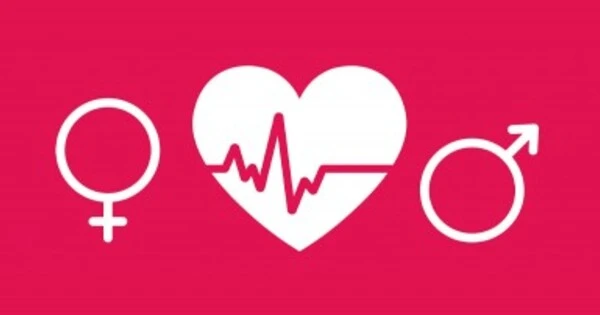Men and women differ in anatomy and physiology, from the lungs and brain to the muscles and joints. The cardiovascular systems of men and women differ as well. Women have smaller hearts and narrower blood vessels than men. Women have lower cardiovascular disease mortality rates than men, and these rates rise with age. It is unclear whether these sex and age effects have changed in recent decades, and how much they differ by country.
Women and men share most of the same risk factors for cardiovascular disease (CVD), a large international study has found – the first such study to include people not only from high-income countries but also from low- and middle-income countries where the burden of CVD is the greatest.
The study was published in The Lancet.
The global study assessed risk factors, including metabolic (such as high blood pressure, obesity, and diabetes), behavioral (smoking and diet), and psychosocial (economic status and depression) in about 156,000 people without a history of CVD between the ages of 35 and 70. Living in 21 low, middle and high-income countries on five continents, they were followed for an average of 10 years.
Women and men have similar CVD risk factors, which emphasizes the importance of a similar strategy for the prevention of CVD in men and women.
Marjan Walli-Attaei
“Women and men have similar CVD risk factors, which emphasizes the importance of a similar strategy for the prevention of CVD in men and women,” said the paper’s first author Marjan Walli-Attaei, a research fellow at the Population Health Research Institute (PHRI) of McMaster University and Hamilton Health Sciences (HHS).
Overall, women had a lower risk of developing CVD than men, especially at younger ages.
A heart attack occurs when cholesterol plaque accumulates inside the artery walls, causing damage to the major blood vessels. This plaque buildup typically occurs in men in the largest arteries that supply blood to the heart. Women are more likely than men to develop this buildup in the smallest blood vessels in the heart, known as the microvasculature. Furthermore, heart disease in both sexes is only partially associated with cholesterol accumulation.

However, diet was more strongly associated with CVD risk in woman than men – “something that’s not been previous described, and which requires independent confirmation,” said Salim Yusuf, lead investigator of the study, senior author, executive director of PHRI, professor of medicine at McMaster University, and cardiologist at HHS.
High levels of bad (LDL) cholesterol and symptoms of depression were more strongly associated with CVD risk in men than in women. The patterns of these findings were generally similar in high-income countries and upper-middle-income countries, and in low-income and lower-middle-income countries.
Funding was provided by the PHRI, Hamilton Health Sciences Research Institute, the Canadian Institutes of Health Research (including through the Strategy for Patient-Oriented Research via the Ontario SPOR Support Unit), the Ontario branch of the Heart and Stroke Foundation, and the Ontario Ministry of Health and Long-Term Care.
When a woman presents to a healthcare provider with signs and symptoms of a heart attack, she may be treated differently than a man. For example, if a heart attack is suspected, both men and women receive a cardiac troponin (cTn) test, which measures circulating troponin levels. This protein is released into the bloodstream after a heart attack damages the heart muscle. Increased troponin levels indicate increased heart damage. However, the clinical threshold that indicates a heart attack may differ between sexes.





